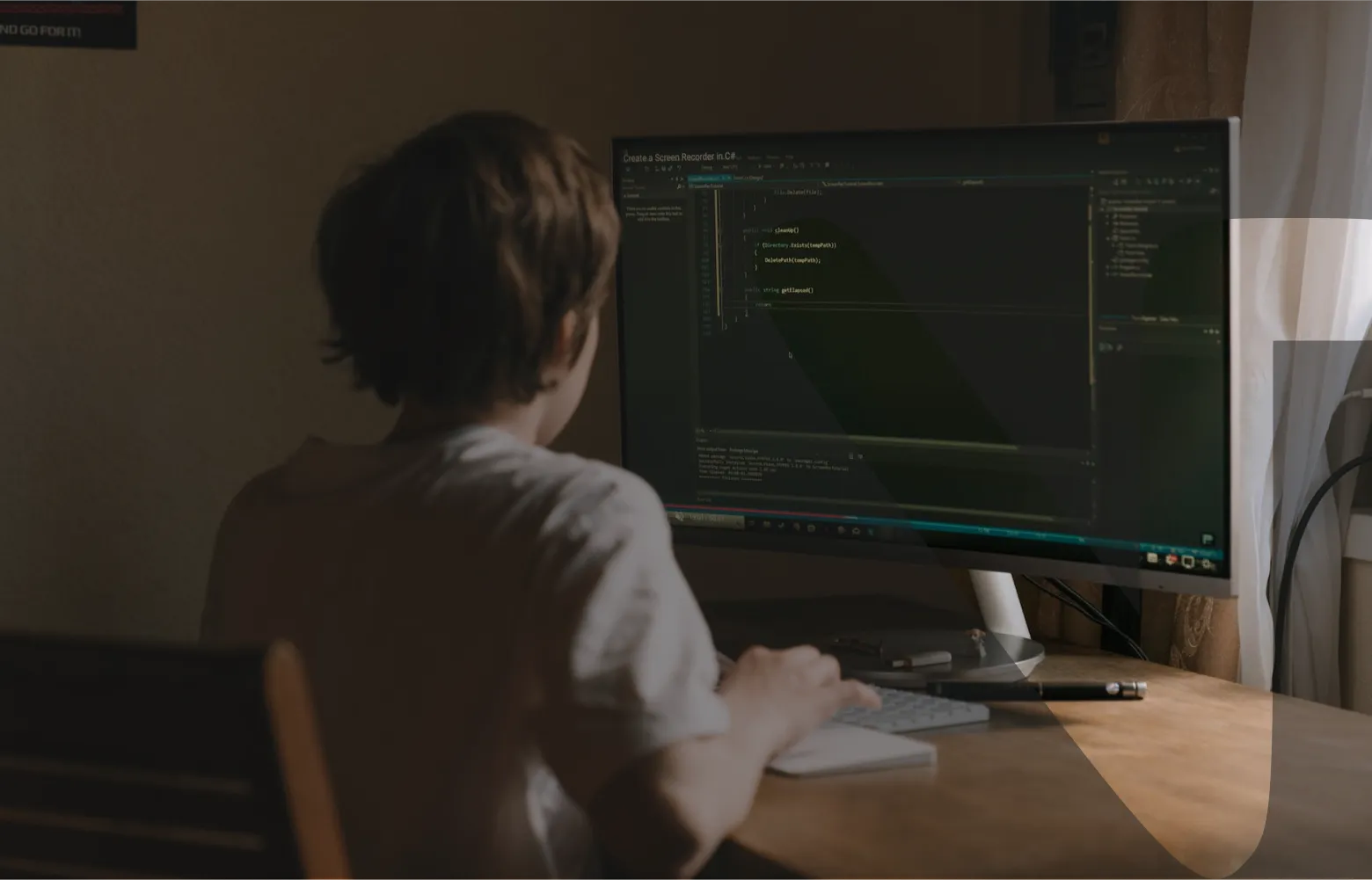
Top Online Full Stack Web Development Course Certification to Advance Your Career
Learn what a full stack development course is, its key features, benefits, career prospects, and more. Master web development skills to boost your career.

Programming is what drives everything from simple apps to complex systems, and is the foundation of all software development. Procedural Programming and Object Oriented Programming (OOP) are two approaches among many others in programming. Each has its own set of rules and system for organising code, which makes them ideal for different kinds of projects as well as programming challenges.
In this blog post, we will look at both Procedural Programming and Object Oriented Programming in depth. We will talk about their main ideas, and compare these two methods so we can know when we should use each one. By reading through this article, you will understand what these paradigms are about and be able to choose a programming style that suits your needs best.
Procedural Programming entails writing software that concentrates on creating procedures or functions that perform tasks. This way, the program is organised into a set of steps or instructions that can easily be followed. Normally, each procedure takes input data, processes it and returns some result, thus allowing for more understandable codes with fewer ambiguities.
Typically in procedural programming programs, state is maintained through global variables where functions manipulate these variables to achieve certain tasks. This type of method is quite useful for exercises that may be expressed using instruction sequences.
A simple example of Procedural Programming can be seen in the C language. Below is a basic program that calculates the sum of two numbers:
#include <stdio.h>
// Global variables
int num1 = 10;
int num2 = 20;
// Function to calculate the sum
int calculateSum() {
return num1 + num2;
}
int main() {
// Call the function and print the result
printf("The sum of %d and %d is %d\n", num1, num2, calculateSum());
return 0;
}
In this example, we have global variables num1 and num2 that store the values to be summed. The ‘calculateSum’ function takes no parameters and directly uses these global variables to compute the sum. The result is then printed in the main function. This straightforward approach is a hallmark of Procedural Programming.
Procedural Programming languages possess unique characteristics that distinguish them from other paradigms in computer language design. These features include:
There are a number of programming languages that are widely known for supporting the procedural programming paradigm. Some of them include:

POSTGRADUATE PROGRAM IN
Multi Cloud Architecture & DevOps
Master cloud architecture, DevOps practices, and automation to build scalable, resilient systems.
Object-oriented programming (OOP) is a programming paradigm, which employs objects and classes as the fundamental constituents of design for software. In contrast to procedural programming that considers functions and sequences of commands, OOP structures code around objects representing real-world things. These objects contain both data (attributes) and actions (methods), making the codes modular and easier to handle.
In OOP, class is like a blueprint used in creating objects. The qualities and behaviours that these objects have been defined by it. For example, if there is a Car class, some attributes might include colour and model whereas methods could be start() or stop(). It is possible to create several Car objects with different attributes but all having the same actions. This method of coding helps in flexibility and reuse hence making big projects manageable.
Here’s a simple example of OOP in Python:
# Define a class Car
class Car:
def __init__(self, color, model):
self.color = color # Attribute
self.model = model # Attribute
def start(self):
print(f"The {self.model} is starting.") # Method
def stop(self):
print(f"The {self.model} is stopping.") # Method
# Create an object of the Car class
my_car = Car("Red", "Toyota Corolla")
# Call methods on the object
my_car.start()
my_car.stop()
In this example, the Car class defines the color and model attributes and the start() and stop() methods. An object my_car is created from the Car class, and the methods are called to perform actions. This encapsulation of data and behaviour within objects is a key feature of OOP.
There are several features that make object-oriented languages unique compared with other types of programming languages:
Here are some widely used languages for implementing object-oriented programming principles:
Here’s a table comparing Procedural Programming and Object-Oriented Programming with key differences:
| Aspect | Procedural Programming | Object-Oriented Programming (OOP) |
| Focus | Emphasises functions or procedures. | Emphasises objects and classes. |
| Data Handling | Data and functions are separate. | Data and functions are encapsulated within objects. |
| Program Structure | Organised around procedures or functions. | Organised around objects and classes. |
| Code Reusability | Limited code reusability. | High code reusability through inheritance and polymorphism. |
| Modularity | Less modular, code is often interdependent. | Highly modular, with independent objects and classes. |
| State Management | State is often managed through global variables. | State is managed within objects. |
| Data Security | Less secure, as data is often globally accessible. | More secure, as data can be hidden using access modifiers. |
| Inheritance | Does not support inheritance. | Supports inheritance, allowing for hierarchical class structures. |
| Polymorphism | Polymorphism is not supported. | Polymorphism allows objects to take on multiple forms. |
| Abstraction | No direct support for abstraction. | Supports abstraction, hiding complex details behind simple interfaces. |
| Code Maintenance | Maintenance can be difficult as programs grow in size. | Easier to maintain due to modular structure and encapsulation. |
| Complexity Management | Suited for smaller, less complex programs. | Suited for larger, more complex systems. |
| Example Languages | C, Pascal, Fortran, COBOL. | Java, C++, Python, Ruby, C#. |
| Development Speed | Faster for simple tasks. | Slower due to design and planning but better for long-term projects. |
| Flexibility | Less flexible in terms of adapting to new requirements. | More flexible, as objects can be easily modified and extended. |
Choosing between Procedural Programming (POP) and Object-Oriented Programming (OOP) depends on the specific requirements of your project, the complexity of the tasks, and the desired flexibility.
Procedural programming is often the best choice for straightforward projects that do not require complex data management. If you’re working on a small application where performance is critical, or if you need to complete a project quickly without extensive design planning, POP can be highly effective.
The reason why Object-oriented programming would be preferable over other models lies in project complexity levels. When a project runs into hundreds or thousands of lines of code, involving many employees over a long time frame, then modular design provided by OOP becomes useful. By using modular design, larger teams of developers can work on different sections of an application simultaneously and this significantly speeds up the development process.
In many cases, a hybrid approach can be the most effective strategy, combining the strengths of both Procedural and Object-Oriented Programming. You might start with a procedural approach for simple tasks and gradually incorporate OOP principles as the project grows in complexity.

82.9%
of professionals don't believe their degree can help them get ahead at work.
The choice between Procedural Programming (POP) and Object-Oriented Programming (OOP) depends on the specific needs of your project. POP is usually preferred for simple tasks executed in one direction where performance matters most and there’s a need to wrap it up quickly. On the other hand, OOP is best suited for large-scale projects that are required to be scalable, maintainable and flexible.
Knowing the strengths and weaknesses of both paradigms will help you make informed decisions. In many cases, a combination of both approaches may be more productive: taking simplicity from POP and modularity from OOP. The main thing here is to find out what method suits better your project goals and its level of complication.
Updated on November 26, 2024

Learn what a full stack development course is, its key features, benefits, career prospects, and more. Master web development skills to boost your career.

Explore app development course; key benefits, skills gained, and career opportunities in the booming tech industry, and course fees.
![How to Become an App Developer in 2025 [A Detailed Guide]](https://staging.herovired.com/wp-content/uploads/2024/01/app-development-scaled.jpg)
Discover the steps & resources about how to become an app developer. Know the must-have skills and get ready to kickstart your app development career.

It is Easy to Build an App when you have knowledge of Computer Science. Read the Blog All You Need to Know about Computer Science for Application Development

Discover why Flutter is revolutionizing cross-platform app development. Learn its benefits, features, and why it’s the go-to framework for developers worldwide.

Learn what Flutter is, its features, and how it simplifies cross-platform app development. Discover the benefits of Flutter and its popular use cases.

Hybrid apps are essentially web apps that have been put in a native app shell. Read here how hybrid apps are differ from Native and web apps.

Developing applications is a critical job role in today’s world. In this blog, we have listed top 5 things to consider before you design and build an application.